Check out this fascinating infographic highlighting our past fiscal year! We’ve had an exciting year and are looking forward to a great 2017-2018!!

Check out this fascinating infographic highlighting our past fiscal year! We’ve had an exciting year and are looking forward to a great 2017-2018!!

For someone who did not do well in my college statistics course (read: I did not do AT ALL well….), The Tao of Statistics: A Path to Understanding (With No Math) sounded intriguing. The intriguing part, I’ll admit, is the “No Math” part of the subtitle…
The author, Dana K. Keller, PhD, has a unique and balanced approach to statistics and data. He has explored Taoism and Eastern philosophies for nearly 5 decades – including teaching in China and Tibet. His PhD is in measurement, statistics, and program evaluation. The goal of this book? “To introduce readers to the commonly encountered terms and techniques in statistics through verse, graphical illustrations, and accompanying text. No equations are used. [emphasis mine!]. The result is an understanding of each concept that is created without having to do math.” (again, the emphasis is mine!). In the introduction we are told, “you do not need to know how to calculate statistics to understand what they are telling you.” This sounded promising to me!
I think we all know how important statistics are. They are, after all, constantly present in our daily lives. We use statistics all the time – often without thinking about it. Listen to the evening news and pay attention to how often statistics are used to illustrate and back up those news stories. We look at our typical gas mileage, current road and weather conditions, and use that information to to figure out how far we can make it before we need to stop to refuel on our way to that vacation destination…
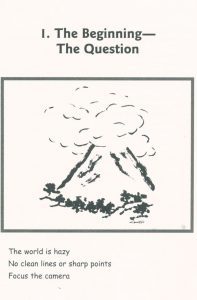
So, where do we start? On page 1. “The world of statistics starts with a question, not with data.” Statistics are important when they are about things that we, as humans, consider important. And from that simple beginning, Keller carefully, and thoroughly, explains what statistical terms mean. Each term – such as reliability, central tendencies, standard deviations and variance, probability, etc. – has its own brief chapter. Chapters are generally one page long, but not over 3 pages and only deal with that particular facet of statistics.
If statistics terms had been explained to me like this I might have done much better in my college course!
The book follows two professionals with very different careers and their concerns with statistics and how they are used. One is a high school principal who uses statistics to discern differences in quality and other characteristics of classes taught in his high school. The other professional is a director of public health. She has questions about how well the residents of her state are meeting national guidelines for public health issues. Using these professionals as examples helps put the differing uses of statistics into real-life situations.
So, why do (most) students dislike statistics so much? In the chapter, “Averages – Central Tendencies,” Keller explains it this way, “Many students first come to dislike statistics when introduced to central tendencies. This is no surprise. The topic begins by making something complicated that should be simple: an average.” He then succinctly explains the average in one page, summed up with the saying:
Keller also provides vivid (understandable and memorable) examples of statistics terms. For example, when explaining the term “mean,” he states: “When one foot is in scalding water and the other in ice water, how consoling is it that, on average, the temperature is fairly comfortable? Think about interpretations of the mean.” Not sure about you, but that is a visualization that I probably won’t forget!
Want to understand the difference between consistency and reliability? The example of three archers and where their arrows land on the target explains them very well (chapter 17)! And once you’ve read that explanation, the saying at the beginning of that chapter should help you remember!
Keller also addresses the ethical use of statistics – the potential for stereotyping and dangers of “unreflectively” using statistics. Throughout the book he looks at the pitfalls of misinterpreting data, using data in the wrong ways and our own bias – whether conscious or unconscious.
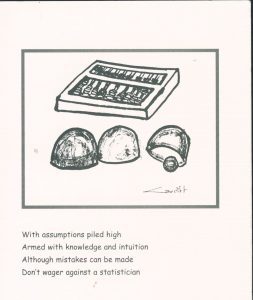
For those of you who are now intrigued with the world of statistics and want to explore further – including the mathematical aspects – we have resources ranging from Introductory Statistics to statistics dealing with very specific areas (Statistical Thermodynamics of Semiconductor Alloys, for example!) to Statistics Done Wrong : the Woefully Complete Guide!
Keller suggests the best way to read this book is to, “Take your time. Breathe deeply and slowly. Relax. Let the world pass you by.” So, kick back, relax and experience The Tao of Statistics!
Resource:
Keller, Dana K. 2016. The tao of statistics : a path to understanding (with no math). Los Angeles : SAGE. Engineering Library QA276 .K253 2016
Other Resources:
Weiss, N.A. 2016. Introductory statistics. Boston : Pearson. Engineering Library QA276.12 .W45 2016
Elyukhin, Vyacheslav A. 2016. Statistical thermodynamics of semiconductor alloys. Amsterdam, Netherlands ; Oxford, UK ; Waltham, MA : Elsevier. Engineering Library TK7871.85 .E49 2016
Reinhart, Alex. 2015. Statistics done wrong : the woefully complete guide. San Francisco : No Starch Press. Engineering Library QA276 .R396 2015.
Yup, it’s July and the temperature is climbing. Time to head inside where it is cool and inviting. Thank heavens for that air conditioning! Ever wonder what they did before the air conditioner was invented? How the modern-day air conditioner evolved? Ever really want to say “thank you” to the inventor of that wonderful a/c?
Ancient Romans pumped water from aqueducts through the walls of their buildings in order to cool them. In Southeast Asia wet grass mats were hung over windows to lower the temperature inside homes. In the 1840s, Dr. John Gorrie of Florida came up with a method of cooling cities and hospital rooms and ridding them of “the evils of high temperatures.” Unfortunately, his system required shipping blocks of ice from frozen lakes and streams in the north to Florida… He was granted a patent in 1851 for a machine he designed which created ice using a compressor powered by a horse, water, wind-driven sails or steam. That technology didn’t make it to the marketplace.
In 1902, Willis Carrier began working for the Buffalo Forge Company where his job was to find a solution to the humidity problem. The high humidity was causing magazine pages to wrinkle at Sackett-Wilhelms Lithography and Publishing Company. He designed a system which controlled humidity using cooling coils and was granted a patent in 1904. He realized that his system of humidity control could be used in many other industries and at the St. Louis World’s Fair his system was used to cool the Missouri State Building. That was the first time the public had access to comfort cooling. In 1922 the first air conditioner was installed at the Metropolitan Theater in Los Angeles. A new system which used a centrifugal chiller was installed at the Rivoli Theater in New York that same year.

In 1928 the Milam Building in San Antonio became the first high-rise air conditioned building. In 1929 Frigidaire introduced a new room cooler small enough for home use. It was, however, heavy and quite expensive. That design was improved upon and by 1930-31 General Electric began producing 32 prototypes of a self-contained room cooler. Breakthroughs continued and by 1947 43,000 window air conditioning units were sold and homeowners were able to enjoy air conditioning in their own homes. By the late 1960s many homes had central air. Air conditioning technology has continued to evolve – becoming more energy efficient. Some of that new technology includes solar cooling systems (check out our resources for more information!)
Air conditioning technology is also used to refrigerate food for storage and transportation. So, when you step outside your air-conditioned home to grab a treat from the ice cream truck – you can thank Willis H. Carrier!
Resources:
Challoner, Jack; editor. 2009. 1001 inventions that changed the world. Hauppauge, NY : Barron’s Engineering Library T212 .A12 2009
Black, Jennifer M. 2014. Machines that made history : landmarks in mechanical engineering. New York, NY : ASME Engineering Library T15 .B58 2014
The Invention That Changed the World. 2017. Weathermakers to the World. Carrier United Technologies.
Lester, Paul. July 20, 2015. History of Air Conditioning. Department of Energy.
About Willis Carrier. 2017. United Technologies Corp. Carrier.
Apparatus for treating air.google patents. US8080097 A.
Milam High-rise Air Conditioned Building. ASME (The American Society of Mechanical Engineers). Date accessed: July 20, 2017.
Other Resources:
Sarbu, Ioan. 2017. Solar heating and cooling systems fundamentals, experiments and applications. London ; Sad Diego, CA : Academic Press Engineering Library TH7413 .S37 2017
Kohlenbach, Paul. 2014. Solar cooling : the Earthscan expert guide to solar cooling systems. London ; New York : Routledge, Taylor & Francis Group : Earthscan from Routledge. Engineering Library TH7681.9 .K64 2014
Castilla, Maria del Mar. 2014. 2014. Comfort control in buildings. Dordrecht : Springer. Engineering Library TH6021 .C664 2014
Whitman, William C. 2013. Refrigeration & air conditioning technology. Clifton Park, N.Y. : Delmar Cengage Learning. Engineering Library FOLIO TP492 .R45 2013
Did you know that you can change the color of a hydrangea from pink to blue? The color of the hydrangea bloom depends on the alkalinity or acidity of the soil! The hydrangea is blue when the soil is very acidic and pink when the soil is only slightly acidic.

Water-soluble pigments, called anthocyanins, are responsible for the color. They appear blue when stacked together and pink when they are farther apart. But, aluminum is actually responsible for the changing colors of hydrangeas – it becomes more soluble in acidic soils, which is more readily absorbed by plants and this allows the anthocyanin molecules to move closer together. To maintain a blue hydrangea bloom, the soil pH should ideally be between 5.0 and 5.5. Soil pH for a pink Hydrangea is 6.5 to 7.0. If the soil is more acidic, limestone may be added to increase the alkalinity.
For more information about anthocyanins, aluminum and the chemistry of soil, check out Chemistry in the Kitchen Garden and The Chemistry of Soils. For specifics on how to change the color of your hydrangeas, check out Hydrangeas: How To Change Color from Pink to Blue!
Okay. We know that the color of a hydrangea bloom can be altered by changing the pH levels in the soil. But, what IS pH? The definition in the glossary of Soil Science Simplified is “… the degree of acidity or alkalinity. The hydrogen potential expressed by a set of negative logarithmic values whereby numbers less that 7.0 signify acidity and numbers greater than 7.0 signify alkalinity. pH 7.0 is neutral, that is, neither acid nor alkaline.”
The pH of the soil has a direct effect on the availability of metal ions which plants need. The metal ions are extremely important in the availability of nutrients for developing root systems. For example, a low soil pH (below 5.0) can produce aluminium and manganese toxicity, which obviously, has a negative impact on the health of plants. For more information on the chemical characteristics of soil, check out the “Chemical Characteristics” section of Soil Science Simplified.
Composting your yard and garden can help you regulate the pH balance. For some basic information on composting, check out our April 24, 2017 blog. Looking for a resource to tell you what plants require what pH? Check out the Farmer’s Almanac.
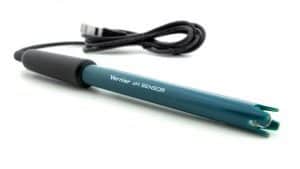
Wondering how to find out how to test your soil for the pH levels? Check the LabQuest pH Sensor out from our Tool Library! It comes with the sensor, a Electrode storage bottle (containing pH 4/KC1 solution) and the user manual. It has automated data collection, graphing, and data analysis and can be used for soil sampling, water quality in streams and lakes, and even chemical reactions in an aquarium!
Look back at the history of measuring the pH levels with “Standardization of pH Measurements Made with the Glass Electrode.” Dated August 10, 1950, it states: “…the development of the glass-electrode pH meter brought hydrogen-ion measurements out of the laboratory and put them to work in all phases of commerce and industry…” The advent of the pH measurement probe changed the way in which pH was viewed. Check out TRAIL (Technical report archive & image library) for digital access to federal technical reports issued prior to 1975.
Measure the pH in your soil, then explore how to change and improve it! Your garden, whether veggie or flower, will be more lush and productive!
Resources:
Eash, Neal S. (and others). 2008. Soil science simplified. Ames, Iowa : Blackwell Pub. Engineering Library S591 .H28 2008
Hanson, James Ralph. 2011. Chemistry in the kitchen garden. Cambridge, UK : RSC Pub. Engineering Library QK861 .H332 2011
Caldwell, Brian. 2011. Growing healthy vegetable crops : working with nature to control diseases and pests organically. White River Junction, VT : Chelsea Green Pub. Engineering Library SB608.V4 C35 2011
TRAIL (Technical report archive & image library). “A collaborative project to digitize, archive, and provide persistent and unrestricted access to federal technical reports issue prior to 1975. Center for Research Libraries : Global Resources Network.
Slatalla, Michelle. May 10, 2016. Hydrangeas: How to Change Color from Pink to Blue. Gardenista . Move Sales, Inc.
The Dirt. Q&A: Some flowers can change color. Fine Gardening. Taunton Press, Inc. Date Accessed: June 16, 2017
Soil pH Levels for Plants.Yankee Publishing, Inc The Old Farmer’s Almanac.
Other Resources:
Gilliman, Jeff. 2008. The truth about organic gardening : benefits, drawbacks, and the bottom line. Portland, OR : Timber Press. Engineering Library SB453.5 .G54 2008
Hydrangea Photo Credit:
Nishizawa, Amelie. June 6, 2016. A Japanese Word for June: Tsuyu. Cato Language Academy.
Interested in learning more about drones? Ever thought about building your own? We have the resources you need!
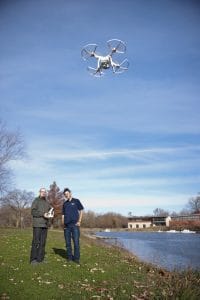
The best place to start might be understanding what a drone is. Dictionary.com defines a drone as “an unmanned aircraft or ship that can navigate autonomously, without human control or beyond the line of sight.” “Unmanned” is the term usually applied to drones, however, the term “uncrewed” has long been used by NASA, is gender-neutral, and thus is the term I will use whenever possible.
In the book Make: Getting Started with Drones, authors Terry Kilby and Belinda Kilby differentiate between types of uncrewed aircraft. For instance, a Remotely Piloted Aircraft (RPA), refers to model aircraft flown by a pilot on the ground using a radio transmitter. A UAV (uncrewed aerial vehicle) is an aircraft which is flown remotely or controlled autonomously using computer software and GPS. Uncrewed aerial systems (UAS or sUAS for a small UAS) refers to all related processes involved with uncrewed aerial technology.
The University of Iowa UAS Advisory Group says, “A UAS consists of an uncrewed/unmanned aerial vehicle (UAV) and the components necessary to operate and control the UAV. UAS are often referred to as drones. According to the FAA, a UAS is the uncrewed/unmanned aircraft and all of the associated support equipment, control station, data links, telemetry, communications and navigation equipment, etc., necessary to operate the unmanned aircraft….”
Now that we have a basic understanding of what a drone is, what’s next in learning to build your own? Both Make: Getting Started with Drones and DIY Drones for the Evil Genius begin with a brief history of flight and some basic principles of aeronautics. Understanding basic principles and the 4 physical forces involved in flight – thrust, drag, weight and lift – will help you design and build your own drone!
Make: Getting Started with Drones recommends building a Little Dipper drone first. The Little Dipper design is open source and downloadable, or alternatively, a complete kit may be purchased. The authors walk you through building the Little Dipper with detailed, step-by-step instructions and include color photos and graphics. Issue 51 of Make : Technology on Your Time (Join the Drone [R]evolution) also has step-by-step instructions (with color photos) explaining how to build a Little Dipper.
Ian Cinnamon, author of DIY Drones for the Evil Genius, recommends purchasing the small (fits in the palm of your hand), inexpensive ($15 or $25 with a simple camera) Cheerson CX-10 to learn and practice flying a drone – before designing and building your own. Basic flight instructions are included (with graphics), AND there are instructions on how to learn to flip your drone! Ready to build your own, from-scratch, not-from-a-kit drone? Cinnamon takes you through the process from the beginning (deciding what your drone will be used for – racing? photography?) to attaching LED lights and a radio-controlled switch for night flying! (Check out this review & flight of the Cheerson CX-10 on youtube!)
Interested in using your drone for search and rescue (SAR)? Make : Technology on Your Time (issue 51) has a section on amateur drone pilots (that could be you!) and SAR volunteering. Information on how to volunteer, what gear you need, how to prep – and do’s and don’ts are all included. There is also information about Search With Aerial RC MultiRotor (SWARM), an organization where volunteer pilots can register to participate in SAR.
If you feel creative when designing your drone, you could have a Death Star….
Okay – you are now ready to fly your drone! What else do you need to know? Laws, rules, and regulations!
The Federal Aviation Administration (FAA) website is a wealth of information about getting started, where to fly, resources and FAQs. There is also information about registering regulations, including a link to register your drone online. For example, if your drone weighs between .55 pounds and 55 pounds (25o grams to 25 kg) you will need to register. There are both civil and criminal penalties if you meet the criteria and do not register.
In addition to federal laws, you will need to check the laws for the state in which you plan to fly. A quick state-by-state guide can be found here. This website is current (2017) and at this point in time, Iowa has no drone laws which extend beyond the federal laws.
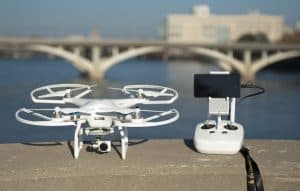
There may also be rules and regulations on drone use in localized areas. The University of Iowa’s UAS Advisory Committee has implemented a policy on drone use. The new policy applies to faculty, staff, and students – and any UAS which are operated by others on campus. There is a campus-wide “no fly zone” without prior permission. Among other things, it addresses privacy concerns, insurance and liability. It does allow drone usage for research, education, marketing, facilities management, and data collection. Be sure to check out the UI policy if you want to fly your new drone on campus!
If you’d like to learn more about how drones are used in military, civil, and disaster relief, check our many resources. Domesticating Drones covers covers commercial uses (package delivery, movie production, agricultural applications, etc.), uses in emergencies, and regulations in the United States and around the world. There is even a chapter on starting a drone business. Civil and Commercial Unmanned Aircraft Systems discusses how drones may be used in forest and ecological ways (i.e. forest fires), law enforcement and public safety uses, research, journalism, and more.
Military Robots and Drones provides background and history of using drones in military actions. It also looks at problems and controversies surrounding their use – including a worldwide perspective. Killing By Remote Control: the Ethics of an Unmanned Military lays out pros and cons of using drones in warfare and explores the moral and ethical implications that follow that decision.
Build a drone this summer! Be creative and DIY your own design! We have the resources to help you be successful! Happy Flying!
Resources:
Kilby, Terry. Belinda Kilby. 2015. Make : getting started with drones. San Francisco, CA : Maker Media. Engineering Library UG1242.D7 K55 2016.
Cinnamon, Ian. 2017. DIY drones for the evil genius : design, build, and customize your own drones. New York : McGraw-Hill Education. Engineering Library TL718 .C56 2017
Perritt, Henry H. Jr., Eliot O. Sprague. 2017. Domesticating drones : the technology, law, and economics of unmanned aircraft. Abingdon, Oxon, UI ; New York, NY : Rutledge. Engineering Library TL718 .P47 2017
Gundlach, Jay. 2016. Civil and commercial unmanned aircraft systems. Reston, VA : American Institute of Aeronautics and Astronautics. Engineering Library UG1242.D7 G87 2016
Strawser, Bradley Jay, editor. 2013. Killing by remote control : the ethics of an unmanned military. Oxford : Oxford University Press. Engineering Library UG479 .K55 2013
Make : technology on your time. Issue 51 (2016: June/July) makezine.com
Use of Drones or Uncrewed Aerial Systems (UAS). University of Iowa Office of Research and Economic Development. Date Accessed: May 24, 2017
UI posts new rules on drone use. January 23, 2017. University of Iowa Office of Research and Economic Development.
Unmanned Aircraft Systems. Federal Aviation Administration. Date Accessed: May 25, 2017
Welcome to the Small Unmanned Aircraft System (sUAS) Registration Service. Federal Aviation Administration. Date Accessed: May 24, 2017.
Little Dipper Build. Make: Getting Started with Drones.com Date Accessed: may 24, 2017.
Search With Aerial RC Multirotor (S.W.A.R.M.) Volunteer Search & Rescue Network Date accessed May 25, 2017
Flyin’ Ryan RC. Aug. 1, 2014. Cheerson – CX-10 (2014 World’s Smallest Quadcopter) – Review and Flight. youtube.
Featured photo courtesy of IIHR – Hydroscience & Engineering
Other Resourees:
Marshall, Douglas M., editor. 2016. Introduction to unmanned aircraft systems. Boca Ratopn : CRC Press, Taylor & Francis Group. Engineering Library TL589.4 .I68 2016
Springer, Paul J. 2013. Military robots and drones : a reference handbook. Santa Barbara, Calif : ABC-CLIO. Engineering Library UG450 .S68 2013
Newcome, Laurence R. 2004. Unmanned aviation : a brief history of unmanned aerial vehicles. Reston, VA : American Institute of Aeronautics and Astronautics. Engineering Library UG1242 .D7 N48 2004
GUESS HOW MUCH COFFEE!!
How many gallons of free coffee will be consumed in the Engin Library May 8-13? Post your guess by Wed 6pm to win a mug! #uienglibcoffee!
Remember this is finals week and we are open extended hours!
Contest open to University of Iowa students, faculty and staff. Only one guess per person.
Good Luck!!
Hard to believe that it is already time for finals!! We have extended our hours and will have free coffee and hot chocolate to help you make it through!
We will also have free coffee and hot chocolate (while supplies last)!
Please bring your own mug – Mother Earth will thank you!
We have plenty of space for both individual and group study. We have 2 group study pods with white boards, and pod 1 has MediaScape®. Instructions for reserving the study pods are here on our webpage.
The Creative Space is also available for group or individual study! We have two 4-person collaboration tables with 43 inch (4K) quad monitors, 4 modeling stations, and 5 dry erase boards!
And don’t forget the lower level of the library is a dedicated quiet space with study carrels (with lights and electrical outlets), easy chairs, bean bag chairs and gamer chairs!
In need of a break to clear your mind? We’ve got you covered there, too! We have Color by Number – Engineering Style grids, LEGOs®, and this year we have an augmented reality sand table! Perfect for giving your mind a break!
GOOD LUCK WITH FINALS!
And what better way to be a Superhero than by doing your part to save our planet!?
Paper or Plastic?
Paper or plastic? Many communities are beginning to outlaw plastic shopping bags. Seems like a no-brainer, right? Plastic is, well, plastic and paper is made from trees. Ergo, paper is good and plastic is bad. Right? Right?
Actually, maybe not….
ALL disposable bags have an environmental cost. Paper bags are made of a renewable resource, can be recycled curbside, and break down in a landfill. But getting a paper bag to the grocery store is a long process – it takes lots and lots of trees. Trees are often logged by clear-cutting which results in habitat reduction and long-term ecological damage. The machinery used to cut the trees need roads, and use fossil fuel to operate. The trees then have to dry for 3 years, then the bark is stripped (more machinery), chipped into 1-inch squares which are ‘cooked,’ and then ‘digested’ with a chemical mixture of limestone and acid……. you get the idea!
Plastic bags are made from oil – a non-renewable resource. Plastic bag creation requires electricity, which mainly comes from coal-burning power plants… Plastic can be recycled, but it isn’t simple or easy, either. It involves re-melting the bags and re-casting the plastic…. And, those plastic bags often become litter – hanging on tree branches, caught in ditches, floating down the street…
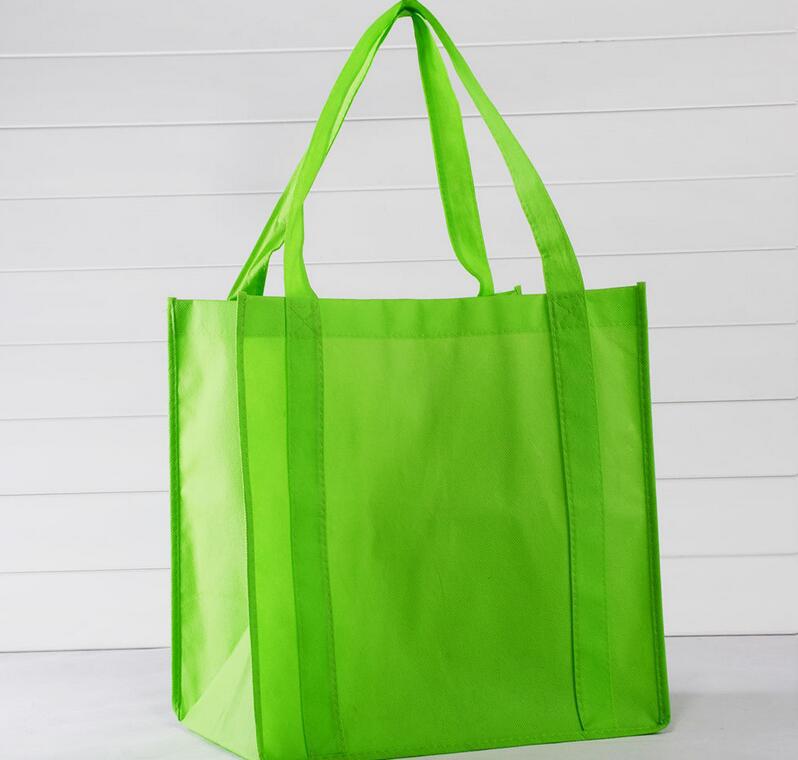 There are biodegradable plastic bags. Sort of. They are completely biodegradable in a compost bin, but slowly – if at all – in a landfill…
There are biodegradable plastic bags. Sort of. They are completely biodegradable in a compost bin, but slowly – if at all – in a landfill…
Best choice? The reusable canvas bags….
Once you know how toxic paper and plastic are it is hard not to look around your living space and notice everything that is plastic or comes packaged in plastic…. look for items that come in recyclable packaging – and packaging that isn’t excessive.
Green cleaning:
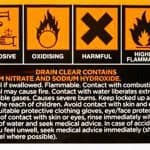 We all want out homes to be clean and with so many products available, how does one choose? Check to see if the product has a “Danger,” Warning,” or “Caution,” designation. Danger = very hazardous, could explode if hot, could cause death if used incorrectly. Warning = less hazardous but easily catches on fire and can cause serious illness or injury. Caution = least hazardous, but can still cause illness and irritation. Green Goes With Everything : Simple Steps To A Healthier Life and Cleaner Planet has a list of dangerous chemicals used in common household products. It also has a number of “recipes” for home-made, safe, green alternatives – for example, a window cleaner which is made of 3 cups of water, 1/4 cup of white vinegar, 1 tablespoon lemon juice, mix & spray! Simple!
We all want out homes to be clean and with so many products available, how does one choose? Check to see if the product has a “Danger,” Warning,” or “Caution,” designation. Danger = very hazardous, could explode if hot, could cause death if used incorrectly. Warning = less hazardous but easily catches on fire and can cause serious illness or injury. Caution = least hazardous, but can still cause illness and irritation. Green Goes With Everything : Simple Steps To A Healthier Life and Cleaner Planet has a list of dangerous chemicals used in common household products. It also has a number of “recipes” for home-made, safe, green alternatives – for example, a window cleaner which is made of 3 cups of water, 1/4 cup of white vinegar, 1 tablespoon lemon juice, mix & spray! Simple!
Green Gardens and Green Eating:
Another way to become a ‘green’ superhero is looking at what you eat, where it comes from, and how it is grown. Love those oranges, strawberries and other out-of-season fruit during the winter months? Think about how they end up in your market when they are, in fact, out-of-season. It is always in-season somewhere in the world, but getting those fruits and vegetables to your table takes a lot of energy – think of all the packing (and packaging), and fossil fuel it takes to get them to you. Not to mention the pesticides and chemicals used to make sure they are “fresh” when they arrive at your store.
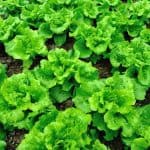 In Living Green: a Practical Guide to Simple Sustainability author Greg Horn relates an incident when he visited a lettuce farm. The lettuce looked so healthy, but the workers were wearing long sleeves and rubber boots. Some were wearing masks. When he asked why they were dressed like that he was told it was because the lettuce was sprayed an average of 12 times with up to 50 different pesticides, fungicides and herbicides. The workers needed to be protected from the chemicals we eat…
In Living Green: a Practical Guide to Simple Sustainability author Greg Horn relates an incident when he visited a lettuce farm. The lettuce looked so healthy, but the workers were wearing long sleeves and rubber boots. Some were wearing masks. When he asked why they were dressed like that he was told it was because the lettuce was sprayed an average of 12 times with up to 50 different pesticides, fungicides and herbicides. The workers needed to be protected from the chemicals we eat…
Sloan Barnett, author of Green Goes With Everything : Simple Steps to a Healthier Life and a Cleaner Planet, cites that in 2004, “…researchers in two different independent laboratories examined the umbilical cord blood of ten newborns from around the country. What they discovered was astonishing: There were 287 chemicals present in the blood these babies depended upon for nourishment and survival. There were 180 chemicals known to cause cancer in humans and animals. there were 217 toxic chemicals known to cause brain and nervous system damage. And there were 208 known to cause birth defects and abnormal development in tests on animals.”.
Solutions: if possible, plant your own garden. Then you have control over pesticides and other chemicals. If you do plant your own garden, plant only plants that are specifically suited to your climate. Trying to grow plants that come from different areas often requires the use of chemicals and other devices to help them flourish. Obviously, not everyone can have their own garden – so look for organic options whenever possible. If you have a farmer’s market nearby – you know you are getting fresh produce and you can personally talk to the grower and find out what has been used on the plants.
The organically grown fruits and veggies probably won’t look as “healthy.” They won’t be as full or lush as the mass produced items, but they won’t be sprayed and infused with chemicals intended to make them grow bigger. They also won’t be packaged in plastic containers to survive shipping. Look at the organic apple – it looks like an apple you would pick right off a tree, imperfections and all!
Water:

Water is finite. No new water is created, what we have is what we have. It may seem like we have an endless supply, after all, approximately 71% of the earth’s surface is covered in water – 96.5% is oceans. Although water also exists in rivers, lakes, streams, icecaps, glaciers, water vapor, and underground in aquifers, 96.5% of the Earth’s water is salt water. And with the growing population comes an increased demand for water – for hygiene, sanitation, and potable water.
Fortunately, there are a lot of changes that individuals can make that will have a substantial impact on our water supply. First, look at the water that you use on a daily basis: showering and bathing, dishwashers, washing machines, toilets, cooking, lawn and gardens… The estimate in 1999 (the last time the American Water Works Association estimated) was that each person used somewhere between 60 and 70 gallons a day.
Did you know waiting only 30 seconds for the hot water to heat up in the shower can result in nearly 4 gallons of water going down the drain? A bath can use up to 70 gallons of water, while a quick shower (with a reduced-flow shower head) can use only 10 gallons.
There have been many advances since 1999 – tankless on-demand water heaters, low-flow toilets and shower heads, water-saving dishwashers and washing machines. And many communities provide incentives to encourage water savings.
Remember that each and every little thing you do does make a difference. Start small and choose one action, one small change you can make. Maybe just use the recipe for window cleaner to start and then go from there!
You can do it! You can be an Earth Month Superhero!
Resources:
Barnett, Sloan. 2008. Green goes with everything : simple steps to a healthier life and a cleaner planet. New York : Atria Books. Engineering Library RA770 .B37 2008
Ryan, Eric. 2008. Squeaky green : the Method guide to detoxing your home. San Francisco : Chronicle Books. Engineering Library RA770.5 .R933 2008
Horn, Greg. 2006. Living green : a practical guide for simple sustainability. Topanga, CA : Freedom Press. Engineering Library RA776.5 .H67 2006
Haynes, Chip. 2009. Wearing smaller shoes : living light on the big blue marble. Gabriola Island BC : New Society Pub. Engineering Library GE196 .H39 2009
Ferguson, Rebecca. 2011. The role of the individual. Farmington Hills, MI : Greenhaven Press. Engineering Library GE195 .F47 2011
Dunn, Collin. July 9, 2008. Paper Bags or Plastic Bags? Everything You Need to Know. treehugger.
How much water is there on, in, and above the earth? Dec. 2, 2016. U.S. USGS. Department of the Interior, U.S. Geological Survey.
Gilbert Celebrates Earth Month With Water Saving Tips.My Local News – AZ April 11, 2017.
Other resources:
Local Johnson County, Iowa resource: Backyard Abundance. 2017
WHO Report: A Quarter of Childhood Deaths are Due to Environmental Pollution. Futurism. Earth & Energy. Date accessed April, 5, 2017
Schiller, Kristan. April 5, 2017. Iconic Monuments You Didn’t Know Were Eco-Friendly : From the Eiffel Tower to the Taj Mahal. AFAR Media .
McGrath, Jane. 2017. Which is more environmentally friendly: paper or plastic? How Stuff Works : Science .
A Company in Japan Just Broke the World Record for Solar Panel Efficiency. Futurism Date accessed April 3, 2017
It’s spring and for many that means gardening!
Most of us have at least heard of compost, but we really may not know much about how it helps the soil, what should – and should not – go into compost and how to effectively use it once we have it!
So. What is compost? Put simply it is decayed – and decaying – organic matter which improves the soil structure and has other benefits for plants. Humus, on the other hand, is well-decomposed plant and animal matter that resembles dark coffee grounds. It is aromatic, lightweight, and spongy – allowing it to hold water. The terms ‘humus’ and ‘compost’ are sometimes used interchangeably.
Why is composting important? Compost does much to increase the health of the soil. It increases the number of microorganisms in the soil, which in turn boosts the number of bacteria, fungi, and other organisms which become food for predators. The soil microbes help protect your plants from pests and diseases. For detailed information on all the benefits composting provides check out How to Make and Use Compost : The Ultimate Guide.

Did you know there are different types of composting?
Heat (or thermophilic) composting uses the heat released by microorganisms as they break down organic matter. When the compost heats up sufficiently it will kill weed seeds and pathogens. Cool composting may take 6 to 12 months (or longer) to produce usable compost, but has the advantage of needing no maintenance. Even without turning and adding moisture the (cold-loving) microorganisms will continue to break down the refuse.
Then there is vermicompost – a compost pile where certain worm species are used to consume and convert the organic matter into useful organic fertilizer. Vermicomposting can even be done in a simple indoor, household worm bin (yes, really!). There is also sheet composting – simply spreading your organic matter on top of the soil in sheets, where it then decomposes right where you need it.
There are several ways to contain the compost. Building a box or fenced in area is a nice way – if you have the space.
You may purchase compost bins – including ones that are meant to be turned and rotated – to help keep the compost aerated. However, purchased bins can be expensive. Don’t despair! If you’d like to begin composting but don’t have much space or money, here’s an easy DIY for you! The video, below, shows an easy way to make a compost bin using a garbage can. It is recommended that you put your new compost bin on cement blocks to let the air circulate through the holes in the bottom. The gentleman presenting the video talks about a 50/50 ratio of brown to green. For more information about what that means check out the paragraph about what goes into a compost bin!
Want to try vermicomposting (that’s the one with worms, remember!) 50 Green Projects for the Evil Genius will walk you through setting up your very own worm compost bin!
Now. What goes into your compost pile or bin?
You may hear that there is a desired ratio of “browns and greens” when composting. But what does that mean? Better terminology would be “high nitrogen” (green) and “low nitrogen” (brown). The terms “brown” and “green” are helpful, however. Browns are plant material that are, well, brown. Fall leaves, wood products, straw… And greens are, well, green. Fresh grass clippings, freshly picked weeds, and most kitchen scraps (even if they aren’t green….). For more complete information about the C:N ratio (carbon to nitrogen) check out Compost, Vermicompost, and Compost Tea : Feeding the Soil on the Organic Farm.
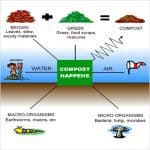
There are things that should not go into a compost pile – don’t add meat scraps and bones – they attract rodents, and no one wants that! Surprisingly, it is recommended you don’t add citrus peels or onions! Onions and citrus are both acidic and can kill the worms and microorganisms on which your compost pile relies. You’ll also want to be wary of composting weeds – you don’t want to replant them when you use the compost! Lay them out in the sun (on a shed roof, a drying frame, etc.) and when they are brown, dry, and brittle – toss them in your compost bin!
There are so many things that can be composted – shredded paper bags, stale crackers and cereal, used paper plates (without a wax coating), wine corks and toothpicks, old cotton or wool clothing (cut into small pieces), newspapers …. For a lengthy list check out 100 Things You Can (and Should) Compost.
Okay. That’s a lot of info about composting. So, what do you DO with all the compost you’ve been diligently making?
Just as there are differing types of compost piles and bins, there are different types of gardening. There are conventionally dug gardens (gardens in which the soil is turned by fork, spade, rototiller…) and no-dig gardens (which are just that – gardens in which you do not turn the soil).
There are advantages to the no-dig garden – besides the fact it is less work! For one thing, you don’t disrupt the earthworm aeration tunnels, nor do you slice the worms in half! By digging your garden you increase the amount of oxygen in the soil which oxidizes more of the carbon which causes carbon dioxide to be released into the atmosphere.
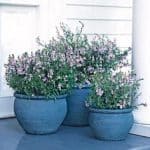
In both types of gardens you can use compost as mulch and top dressing around growing plants. You can also use mulch on plants in containers – including indoor houseplants! If you are interested in learning how to make your own potting mixes check out How to Make and Use Compost : The Ultimate Guide. There are also instructions for compost specifically for cuttings and seeds.
Now, go out and start that compost pile! Before you know it you’ll have great compost and a beautiful, lush garden!
Resources:
Cromell, Cathy. 2010. Composting for dummies. Hoboken, NJ : Wiley ; Chichester : John Wiley, distributor. Engineering Library S661 .C76 2010
Scott, Nicky. 2009. How to make compost : the ultimate guide. Totnes : Green Books. Engineering Library S661 .S3 2009
McKay, Kim, Jenny Bonnin. 2009. True green home : 100 inspirational ideas for creating a green environment at home. Washington, DC : National Geographic Society. Engineering Library TH4860 .M25 2009
Shariff, Jamil. 2009. 50 green projects for the evil genius. New York : McGraw-Hill. Engineering Library GE195 .S47 2009
Gershuny, Grace; Jocelyn Langer, illustrator. 2011. Compost, vermicompost, and compost tea : feeding the soil on the organic farm. White River Junction, VT : Chelsea Green Pub. Engineering Library S661 .G45 2011
Bloom, Jonathan. Sept. 15, 2011. Americans Waste enough Food to Fill a 90,000-seat Football Stadium Every Day – What Can We Do About It? Alternet : Food.
Pavlis, Robert. March 18, 2015. How to Compost: Browns & Greens. Garden Myths – Learn the truth about gardening.
Gifford, Dawn. 100 Things You Can (And Should) Compost. Small Footprint Family : sustainability starts at home. Date Accessed: April 18, 2017
Gifford, Dawn. 10 Things You Should Not Put In Your Compost Pile.Small Footprint Family : sustainability starts at home. Date Accessed: April 18, 2017
Vanderlinden, Colleen. April 9, 2017. Composting Weeds : Dos, Don’ts, and Things to Watch Out For. The Spruce : Home Composting
Gonzalez, Ramon. May 7, 2012. The Do’s and Don’ts of Backyard Composting. Treehugger : Sustainability with SASS.
Jabs, Matt. Kitchen Compost Bucket – DIY, Easy, and Frugal. DIYNatural. Date Accessed: April 19, 2017
Hayden, Scott. Oct. 5, 2013. Around the Home: #3 Trashcan Composter. youtube.com
Recycling : Backyard Composting. 2017. Kern County Waste Management.
Other Resources:
Flowerdew, Bob. Composting. 2012. New York : Skyhorse Pub. Engineering Library S661 .F56 2012
Haynes, Chip. 2009. Wearing smaller shoes : living light on the big blue marble. Gabriola Island, BC : New Society Pub. Engineering Library GE 196 .H39 2009
Backyard Abundance. 2017. Johnson County, Iowa. Backyard Abundance.
Winter, Catherine. May 23, 2016. DIY: turn an old garbage can into a backyard compost bin. inhabitat.
Pham, Diane. Jan. 15, 2013. How to Start an Odor-Free Freezer Compost Bin as a City or Small Space Dweller. inhabitat

Do you know how many types of umbrellas there are now? Not just the ‘normal’ umbrella with the hooked handle, the umbrella that opens and closes at the touch of a button, or the umbrella that is small enough to fit in a pocket or bag…. Now there are umbrellas that forecast the rain and have a geolocator so you don’t ever lose it, umbrellas that will play videos on the underside of the dome, umbrellas that change color with the rain, umbrellas with wind vents, umbrellas that open “upside down,” even a mister-equipped umbrella designed to protect from precipitation, from the sun and harmful UV rays and also allows the user to activate a mist head to help cool off on hot, sunny days. And, the list goes on…. Curious about how many patents there are for umbrellas? Go to our Patents Guide and use any of the “Where to Search” links to explore and see what is out there – and when the patents were filed!
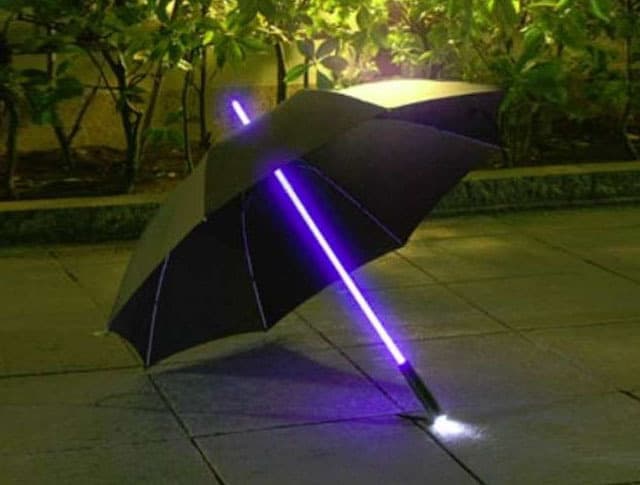
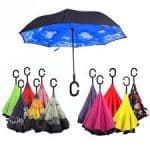
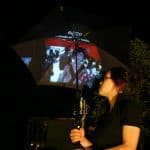
Umbrellas, parasols, bumbershoots, brollys, parapluie – you may hear any of those in reference to the “umbrella.” We often think of Britain when we hear “bumbershoot,” but in a Slate article, author Ben Yagoda notes that the Oxford English Dictionary identifies the term as “originally and chiefly U.S. slang.” Brolly, however, is a British term for umbrella and parapluie is French. You may also hear the term “gamp” used for umbrella – it comes from the Charles Dickens character Mrs. Gamp who always carried an umbrella.

Umbrellas have been around a long time. There are written records referencing a collapsible umbrella in the year 21 AD and a Terracotta Army carriage from c. 210 BC had an umbrella fixed to the side.
Evidence of the existence of the umbrella has also been found in the Middle East, ancient Egypt, ancient Greece, ancient Rome and ancient India. Some believe that umbrellas – probably made of palm leaves – date back to the earliest human civilization.
A parasol is generally used to provide shade from the sun and the umbrella is coated – often with Teflon – to protect from rain. In Japan, however, there are waterproof paper umbrellas, referred to as “Wagasa.” These umbrellas are made by steeping strong Japanese paper in oil, making it waterproof! The word ‘umbrella’ comes from the Latin word ‘umbros,’ which means shade or shadow. Umbrellas and parasols are not only associated with protection from the elements. They have been adopted and used in religious ceremonies and rites, as light reflectors in photography, and then there are the little drink umbrellas….
Umbrellas aren’t just used for protection from the elements, they may also be used as security protection! French President Nicolas Sarkozy was the first to use a Kevlar-coated umbrella for security purposes. Offensively, the shaft may be used to hide a blade and in 1978, Bulagrian President Georgi Markov was assassinated by a KGB agent who carried a deadly poison in his modified umbrella!
There are many superstitions surrounding umbrellas – the most well-known, perhaps – never open an umbrella indoors. It is believed that superstition came from ancient times when umbrellas were used only by royalty and “…designed to mimic the goddess who formed the sky, [so] their shade was sacred…” (How Stuff Works : Culture). That superstition also is sound advice – opening an umbrella indoors can be hazardous to people and/or fragile items that are in the vicinity… Studies have been done about the ways in which people ‘reverse’ the bad luck. It is believed that rituals which involve the person performing an avoidance action – i.e. knocking on wood, throwing salt – are ‘pushing away bad luck.’
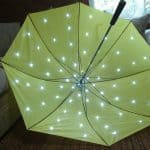
Interested in a DIY project? How about creating your own Electric Umbrella? Full instructions can be found here. To help you out, we have wire cutters and soldering guns in our Tool Library. Want to practice using LEDs and wearable tech before you tackle an umbrella? Check out the Lilypad – also available in our Tool Library! It has everything you need – battery, conductive thread, copper wire, switches, LEDs… You’ll find the information on our Tool Library page under Creative Boxes!
Thank you to the University of Iowa Art Library for allowing us to display Hong Kong Umbrella in our exhibit. This beautiful book has full-color photographs of umbrellas in the streets and back alleys of Hong Kong. It also shows how, in 2014, a yellow umbrella became a symbol of protest when one was used as protection from pepper spray during a student protest.
This video is a fascinating look at how waterproof paper umbrellas are created!
Resources:
Cover photo credit:
Photo via GoodFreePhotos
Terracotta Army carriage with umbrella securely fixed to the side, from Qin Shihuang’s tomb. c 210 BC
Some interesting Patents:
Backpack with an integrated umbrella device. Michael C. Weaver, inventor. Publication Date: June 23, 2011. US 20110147427 A1.
Mister-equipped umbrella system. Raj Rao, Inventor. Publication Date: Aug. 22, 2013. US 20130213446
Pet umbrella and combined pet leash and umbrella. Irina Zhadan-Milligan, Yuri Zhadan, Inventors. Publication Date: March 29, 2005. US 20040200437
Pillow with retractable umbrella. Marielena Jane-Prats, Inventor. Publication Date: March 30, 2004. US 6711769
Resources:
Zhang, Y., Risen, J. L., & Hosey, C. (2014). Reversing one’s fortune by pushing away bad luck. Journal of Experimental Psychology. General, 143(3), 1171-1184. PDF file of paper.
Tomlin, C M. 2010. The Truth About 8 Creepy Superstitions. National Geographic Kids, 15423042, Oct. 2010, Issue 404. Text available through University of Iowa Libraries InfoHawk+
Payne, Seamus. 2017. Dry-Tech: The 20 Coolest Umbrellas You’ll Ever See. TheCoolList
Vitto, Laura. Jan. 7, 2017. Smart umbrella warns you when it’s going to rain. Mashable Watercooler .
Yagoda, Ben. Cheerio, Bumbershoot! The word is not actually British for Umbrella. Nov. 4, 2011. Slate: The Good Word
Grigsby, Jean. June 15, 2015. Don’t Forget Your Brolly! Umbrella History and Facts. Farmers’ Almanac.
Umbrella Facts. Dollys Brollys. Date Accessed: April 6, 2017
16 fun facts about the humble umbrella. JollyBrolly July 31, 2015.
Dove, Laurie L. Why are people afraid to open an umbrella indoors? How Stuff Works : Culture Date Accessed: April 10, 2017
Enjoy rainy days with a Japanese umbrella. March 2013. Japan Monthly Web Magazine.
sockmaster. Electric Umbrella. Instructables. Date Accessed April 14, 2017
Other Resources:
These Japanese Umbrellas Reveal Hidden Patterns When Wet. boredpanda Date Accessed: April 6, 2017.
Vyse, Stuart A. 1997. Believing in magic : the psychology of superstition. New York : Oxford University Press. Hardin Library for the Health Sciences BF1775 .V97 1997